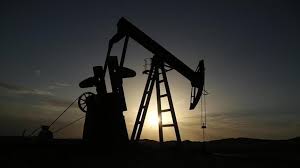Tehran August 25, 2021: Iran has resumed fuel exports to Afghanistan after the situation stabilized following a military takeover of the country by the Taliban, a spokesman of Iran’s oil products exports guild, Hamid Hosseini told S&P Global Platts.
“The Taliban came in and started capturing provinces one by one. They closed Khorasan and Baluchestan border customs so only South Khorasan border was open and working,” Hosseini said. “Now, all provinces have been almost stabilized.”
Newly appointed leaders by the Taliban have issued a new directive cutting customs tariffs, Hosseini said, allowing for the resumption of exports through other customs points between the countries.
A L S O || R E A D
Global Oil Demand To Peak By 2025: Platts Analytics
According to a graph from Iran’s energy exchange market provided by Hosseini, in May 2020, Iran exported 18,000 mt (4,355 b/d) of gasoil to Afghanistan. The combined volume of gasoil, gasoline and LPG stood at 33,000 mt in June 2020. The highest since then was December’s 173,000 mt of gasoline and gasoil, of which gasoline accounted for around 158,000 mt.
In recent months, however, Iranian fuel exports to Afghanistan have been minimal due to increased domestic consumption in Iran and refinery maintenance work, Hosseini said.
“Exports to Afghanistan have been at a minimum… gasoil had been used in the Iranian power plants and therefore, exports of gasoil and gasoline drastically decreased by the NIOC [the national oil company]. Thus, the NIOC’s exports figures dropped,” he said.
Hosseini said, however, that Afghan traders also buy raffinate, heavy and light hydrocarbons and blend them in Afghanistan to produce fuel. “You can buy materials like naphtha, raffinate and MTBE and process them into gasoline,” he said.
The bulk of Afghanistan’s fuel comes from neighbors to the north and west. A 75-kilometer rail link between Uzbekistan and Afghanistan’s third-largest city, Mazar-i-Sharif, opened in 2011, facilitating imports.
In 2017, Turkmenistan dominated its fuel imports, accounting for 40 percent of Afghan diesel imports and 60 percent of gasoline and jet fuel imports.
Under international military occupation, Afghanistan was also reliant on fuel trucked in from Pakistan. Pakistan provided Afghanistan with jet fuel, sourced from third countries — it supplied 71,000 mt of jet fuel to Afghanistan in the 2015-16 financial year, according to Pakistan State Oil company, which handled 82% of those supplies.
Afghanistan consumed a modest 22,000 b/d of refined oil products in 2018, according to the US Energy Information Administration.










